Nose Surgery in Penang
Search and Compare the Best Clinics and Doctors at the Lowest Prices for Nose Surgery in Penang

Find the best clinics for Nose Surgery in Penang
With Medijump you can browse 2 facilities offering Nose Surgery procedures in Penang. The cheapest price available is $1,009 in Kuala Lumpur. And for the cheapest price globally, prices start from $101 in Poland.
Nose Surgery in Malaysia
Price: $ 1,009
Nose Surgery in Kuala Lumpur
Price: $ 1,009
Poland offers the best prices Worldwide
Price: $ 101
From 7 verified reviews
Suhaimi Bakar, 27 September 2020
High level of professionalism attitude by all staff towards customer satisfaction make myself feel like home during difficult times.
Carl Corrynton Medical Centre, located in Georgetown, Penang, Malaysia offers patients Nose Surgery procedures among its total of 29 available procedures, across 3 different specialties. Currently, there's no pricing information for Nose Surgery procedures at Carl Corrynton Medical Centre, as all prices are available on request only, whilst the national average price is approximately $1,863. All procedures and treatments are undertaken by the lead specialist at the Hospital, and they are not accredited by any recognized accreditations institutes
Compare Before & After Photos of _procedure_photos.phpNose Surgery
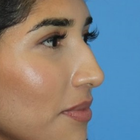
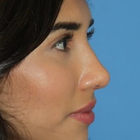
Full-side view
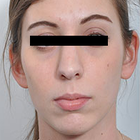
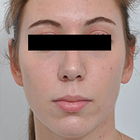
Front view
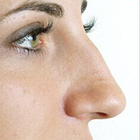
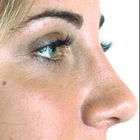
Full-side view
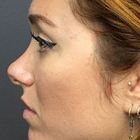
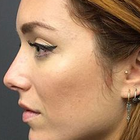
Full-side view
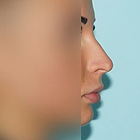
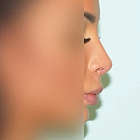
Full-side view
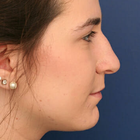
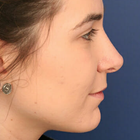
Full-side view
WHY US?
At Medijump, we're making medical easy. You can search, compare, discuss, and book your medical all in one place. We open the door to the best medical providers worldwide, saving you time and energy along the way, and it's all for FREE, no hidden fees, and no price markups guaranteed. So what are you waiting for?

Free

Best Price

Widest Selection

Risk-Free
What you need to know about Nose Surgery in Penang

Commonly referred to as a Rhinoplasty, it is the medical term for reshaping of the nose or corrective surgery of the nose. It is one of the most common facial plastic surgeries (Facelift) procedures performed. Nose surgery can be performed to change the consequence of genetics, birth defect or nasal injury. It can be performed to enhance the appearance and/or to improve nasal breathing.
Surgery can be performed to correct nasal humps, the curvature of nose-bridge, nose tip irregularities, and asymmetry in the nostrils. The nasal appearance can be altered in various ways using intra-nasal chisels. Nose surgery procedures generally fall under three types: open rhinoplasty, closed rhinoplasty, and tip rhinoplasty. Rhinoplasty is normally performed under general anesthesia and will not leave any visible scars on the nose.
What does a Nose Surgery Procedure Involve?
Nose surgery is an individualized surgery. Before the surgery, you will need to discuss important factors with your surgeon to determine if it is suitable for you. Your surgeon will review your medical history, including your previous surgeries, medical conditions, and any medications you are taking. You will need to have a complete physical examination, such as blood tests. Your surgeon will also consider your other facial features, the skin on your nose, and what you would like to change or correct. Then, your surgeon will develop a customized plan for you. Two weeks before and after surgery, avoid any medications that contain aspirin or ibuprofen, such as Advil and Motrin IB because these medications can increase bleeding. You will need to also stop taking herbal remedies and over-the-counter supplements. If you are an active smoker, stop smoking because smoking can slow your healing process and increase the risk of getting an infection.
During the actual surgery, you will be given either local anesthesia or general anesthesia. The type of anesthesia depends on how complex the surgery is and what the surgeon would prefer to use. Then, the surgery will start by making incisions inside your nose or at the base of your nose between your nostrils. Your surgeon will reshape the inner bone and cartilage underneath your skin to make a more pleasing appearance.
There are several ways to change the shape of your nasal bones or cartilage, depending on your nose’s structure and how much needs to be removed or added. If only small changes are required, your surgeon may use cartilage taken from deeper inside your nose or your ear. However, for a much larger change, your surgeon may use cartilage from your rib, implants, or bone from other parts of your body. When the changes are finished, your surgeon will place the nose’s skin and tissue back. The incisions will be closed by stitches.
How Long Should I Stay in Penang for a Nose Surgery Procedure?
If everything goes well, you can go back to your hotel on the same day once the effects of anesthesia wear off. However, you will need to stay in a recovery room for a few hours so the staff can monitor you. Some people may need to stay in hospital overnight. After you are discharged from the hospital, you will need to stay in Penang for at least 10 to 14 days for initial recovery, follow-up checkups, and for the stitches to be removed.
What's the Recovery Time for Nose Surgery Procedures in Penang?
The recovery period for nose surgery can be different from person to person. In general, 2 to 3 weeks is needed until you can get back to your full normal routine and 3 to 6 weeks until you can do any strenuous activity. However, you should be able to go back to work within a week, except if your job requires strenuous physical activity. You will feel gradually better each day in the first week. You will experience swelling, which can take six months to subside. The only people who will notice the swelling is you and your surgeon. Your final nose shape will be apparent after it is completely healed.
What sort of Aftercare is Required for Nose Surgery Procedures in Penang?
After the surgery, you may need to wear a nasal splint for the first week. The splint is used to protect and support your nose. Your nose may be congested due to swelling or from the nasal splint. You need to rest in bed with your head raised higher than your chest to reduce bleeding and swelling. For a few days after the surgery, you may also experience slight bleeding and drainage of mucus. Your surgeon may place a “drip pad” under your nose to absorb drainage.
Your surgeon may ask you to avoid strenuous activity, take baths instead of showers, avoid blowing your nose, eat high-fiber foods to avoid constipation, not to do any facial expressions (smiling or laughing), not wearing pull clothing and wear button-downs instead.
For at least several weeks after the surgery, do not rest eyeglasses or sunglasses on your nose to prevent pressure. You should also wear SPF 30 sunscreen when you are outside because too much sun can cause permanent irregular discoloration to your nose. Do not put anything such as ice or cold packs on your nose even though it is swelling as the swelling will go away faster by limiting your dietary sodium.
What's the Success Rate of Nose Surgery Procedures in Penang?
Nose surgery is known to have around 80% to 90% success rate. Nevertheless, just like any other surgery, it still has possible risks and complications. These risks are bleeding, infection, numbness, permanent nerve damage, and an adverse reaction to the anesthesia. You should call your surgeon immediately if you suspect any of the symptoms. Other possible risks are difficulty breathing through your nose, uneven-looking nose, persisting pain, swelling, and discoloration, scarring, septal perforation, and the need for a second or third surgery.
For an in-depth analysis of the closed rhinoplasty procedure with before and after images, watch this short video.
Are there Alternatives to Nose Surgery Procedures in Penang?
If you do not want to undergo surgery, or if it is not suitable for you, you can get filler injections, such as Botox, Juvaderm, and Restylane. They can change the shape of your nose and only require a short visit to the doctor. This method is not painful and needs no incisions or stitches.
Whilst the information presented here has been accurately sourced and verified by a medical professional for its accuracy, it is still advised to consult with your doctor before pursuing a medical treatment at one of the listed medical providers
No Time?
Tell us what you're looking for and we'll reachout to the top clinics all at once
Enquire Now

Popular Procedures in Penang
Prices Start From $404

Prices Start From $111

Prices Start From $70

Prices Start From $220

Prices Start From $1,945

Prices Start From $192

Prices Start From $500

Recommended Medical Centers in Penang for Nose Surgery

- Interpreter services
- Translation service
- Religious facilities
- Medical records transfer
- Medical travel insurance
- Health insurance coordination
- TV in the room
- Safe in the room
- Phone in the room
- Private rooms for patients available

- Interpreter services
- Translation service
- Religious facilities
- Medical records transfer
- Medical travel insurance
- Health insurance coordination
- TV in the room
- Safe in the room
- Phone in the room
- Private rooms for patients available

- Interpreter services
- Translation service
- Religious facilities
- Medical records transfer
- Medical travel insurance
- Health insurance coordination
- TV in the room
- Safe in the room
- Phone in the room
- Private rooms for patients available

- Interpreter services
- Translation service
- Religious facilities
- Medical records transfer
- Medical travel insurance
- Health insurance coordination
- TV in the room
- Safe in the room
- Phone in the room
- Private rooms for patients available

- Interpreter services
- Translation service
- Religious facilities
- Medical records transfer
- Medical travel insurance
- Health insurance coordination
- TV in the room
- Safe in the room
- Phone in the room
- Private rooms for patients available

- Interpreter services
- Translation service
- Religious facilities
- Medical records transfer
- Medical travel insurance
- Health insurance coordination
- TV in the room
- Safe in the room
- Phone in the room
- Private rooms for patients available
Nose Surgery in and around Penang
About Penang
Penang is one of the most visited states in Malaysia and is located on the north-west coast of Peninsular Malaysia. Penang consist of two parts: Penang Island and Seberang Perai. Widely known as the ‘Pearl of the Orient,’ Penang attracts millions of tourists every year with its mixture of multicultural heritage, natural charms, and wonderful food.
Penang is also a popular medical tourism destination, with around 60% of the tourists who visited the state in 2017 came for affordable, high-quality medical treatment. According to the former Chief Minister of Penang, Lim Guan Eng, Penang’s medical tourism contributed 42.3% in revenue to the health tourism market in Malaysia. Medical tourists get the best in terms of quality, options, and savings. The top medical procedures are cosmetic surgery, eye care, and dental surgery.
Penang is a preferred medical tourism destination for the following reason:
- World-class doctors and well-trained nurses.
- Offers a wide range of excellent healthcare services.
- Affordable medical procedures cost less than other medical countries.
- No queue for specialist consultations.
- Public and private hospitals with global accreditation to ensure quality care.
- The perfect environment for rejuvenation and recovery.
Popular Areas in Penang
Packed with diverse culture and beautiful scenery, Penang is a wonderful place for tourists to explore. There are plenty of places to enjoy the most incredible sites including the white sand of Batu Feringghi, the iconic architecture of Kho Kongsi, the beautiful landscape from the summit of Penang Hill, the Tropical Spice Garden, and the pit vipers in the altars of Snake Temple.
Penang’s capital, George Town, is listed as a UNESCO World Heritage Site. George Town is home to a great number of heritage and arts as well as the largest collection of pre-war buildings in Southeast Asia. This historical city is the best place for tourists who want to indulge in cultural sight.
Considered as one of the best places in the world to savor delicious food, the culinary in Penang is a blend of Malay, Chinese, Indian, Peranakan, Thai, and European specialties. Tourists can try traditional cuisines such as Assam Laksa, Nasi Lemak, Lok Lok, and many more. Vegetarian versions of the famous local street dishes are also available in various Chinese and Indian outlets.
Weather and Climate in Penang
Just like any other parts of Malaysia, Penang enjoys a year-round tropical rainforest climate which means it is warm and humid throughout the year. However, the temperature of Penang Island is often higher than the mainland. The average temperatures range between 29–32°C during the day and 25–29°C during the night.
The weather is usually warm in January and February. The rainy season usually starts during the southwest monsoon from April to September and October to early November. The best time to visit Penang is from late November to February as the weather is mostly sunny but it’s not too hot or humid to do outdoor activities during the day.
Getting Around in Penang
Penang is easily accessible by air since Penang International Airport has daily flights to and from domestic destinations and has International connections with Singapore, Jakarta, Bangkok, Taipei, Hanoi, and many more major cities in Asia. The airport mainly serves budget airlines such as AirAsia and Firefly, although larger airlines including MAS and Qatar Airways also operate less frequent flights.
To reach George Town, tourists can take a taxi, bus, an airport transfer, or hire a car. Note that airport taxis operate on a voucher system, tourists must buy a voucher beforehand from inside the terminal to avoid taxi cheats. The taxi fare to George Town should cost around RM38 (around 9.00 USD).
There are several different types of public transportation available in Penang. Walking or a trishaw ride is the best way to get around George Town. Free CAT Bus (Central Area Transit) is available for tourists to get to popular attractions in the capital city for free. To travel around surrounding suburban areas of George Town, tourists can opt for Grab (e-hailing apps like Uber).
For longer distance trips away from the capital city, Rapid Penang Bus, or renting a car/scooter are the best options. Taxis are widely available around the island but be sure to agree on a price first because taxis here do not use meters.
Tourist Visas in Penang
Nationals of most countries are granted visa-free entry to Malaysia for 30 or 90 days. Holders of passports issued by China, India, Sri Lanka, Nepal, Myanmar, Bangladesh, Pakistan, Bhutan, Serbia, and Montenegro are required to apply for a Malaysian tourist visa. The foreign nationals who require a visa to enter Malaysia must apply and obtain a visa in advance before entering the country.
All visitors must hold a passport valid for at least six months beyond the date of entry into Malaysia. Do ensure to have a valid visa and obey all the rules because the Malaysian Government has a very strict visa regulation and will punish those who violate the terms.
Additional Information
- Local Currency: Malaysian Ringgit (RM) is the local currency. It is made up of 100 Sen (cent). 1USD is equivalent to RM4.20. Formerly known as the Malaysian Dollar, older Malaysians sometimes refer to Ringgit as ‘Dollars.’
- Money & Payments: ATMs are available across Penang. Credit cards (Visa and MasterCard) are accepted in most hotels and established restaurants. There are plenty of moneychangers in the region and most banks will exchange cash with a commission. Be sure to carry small bills since many street vendors only accept cash. Tipping is not necessary because service charges are already included in hotels and restaurants but tourists may tip as a gesture of appreciation.
- Local Language: the official language is Malay but English is widely-spoken since many locals can speak English proficiently. Other major languages spoken in Penang are Hokkien (Penang Hokkien), Teochew, Cantonese, Hakka, Mandarin, and Tamil.
- Local Culture and Religion: Islam is the official religion of Penang but there are other religions including Buddhism, Hinduism, Taoism, and Christianity. Tourists can see the diverse culture and faith of Penang in Pitt Street, known as ‘Street of Harmony,’ where four different major places of worship stand only meters away from each other.
- Public Holidays: Penang celebrates all the major religious holidays such as Hari Raya Aidilfitri, Chinese New Year, Wesak Day, Deepavali, and Christmas. Many festivals are lined up throughout the year. Penang also hosts unique festivals like George Town World Heritage Day every year on July 7 to commemorate the inscription of the city as a World Heritage City by UNESCO.
Popular Searches
- Plastic Surgery in Thailand
- Dental Implants in Thailand
- Hair Transplant in Thailand
- Breast Augmentation Thailand
- Gastric Sleeve in Thailand
- Gender Reassignment Surgery in Thailand
- Laser Hair Removal in Bangkok
- Botox in Bangkok
- Dermatology in Bangkok
- Breast Augmentation in Bangkok
- Coolsculpting in Bangkok
- Veneers in Turkey
- Hair Transplant in Turkey
- Rhinoplasty in Turkey
- Stem Cell Therapy in Mexico
- Rhinoplasty in Mexico
- Liposuction in Mexico
- Coolsculpting in Tijuana
- Rhinoplasty in Korea
- Scar Removal in Korea
- Gastric Sleeve in Turkey
- Bone Marrow Transplant in India
- Invisalign in Malaysia
- Plastic Surgery in the Dominican Republic
- Tummy Tuck in the Dominican Republic
- Plastic and Cosmetic Surgery in Poland
- Rhinoplasty in Poland
- Hair Implant in Poland
- Dental Implants in Poland
- IVF in Turkey

